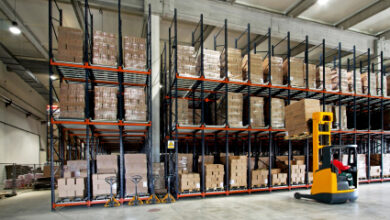Strategic Network Design – Short-Term Decisions or Long-Term Strategic Planning?

Most of the supply chain network optimization projects we conduct at Dijitalis are shaped according to our customers’ needs at the time. These can be classified as short-term needs and long-term needs.
Short-term decisions for Supply Chain Design may include:
- Approaching the end of lease agreements. The lease contract for your current facility is ending next year. Should you renew the contract or look elsewhere?
- Network capacity. The current network needs continuous additional capacity to accommodate organic growth from year to year. When capacity is needed, should you lease external space, expand the existing facility, or invest in a new facility in addition to the existing ones?
- Displeasure with your 3PL logistics company. If your service contract with the current 3PL logistics company whose warehouses you benefit from is expiring, you may need a different company. When selecting the new company, you would want to make the right comparisons.
Long-term decisions for Supply Chain Design may include:
- Mergers and Acquisitions (M&A) activities. Is the company planning to acquire or divest a business/product group?
- New customer channels. Does the company want to launch an e-commerce platform in addition to its existing sales channels?
- New service requirements. Are there new service level constraints that the future network should consider?
Now that the factors for strategic network design for network growth have been identified, you are ready to consider the design horizon of your network analysis. Short-term efforts typically consider a time frame ranging from months to a year. These efforts are designed to seek quick gains to reduce costs and improve service in the existing supply chain design network. They can also help determine network decisions to be made within the next twelve months. Longer-term efforts are evaluated with a design horizon of three to five years. This evaluation of supply chain design should generally align with the existing growth plan.
Supply Chain Design for a three to five-year horizon is the most common timeframe because it’s typically the furthest point companies can predict their operations. This is usually suitable for modest growth (around 3% to 5% annually). When growth exceeds 8% annually, you should definitely consider expanding your design horizon or at least conducting sensitivity analysis looking beyond five years.
Now, let’s consider an example. A company with a high growth rate distributes nationwide from a single facility in Denizli, but demand has outgrown current capacity, and they are bursting at the seams. The company wants to explore two options for its growth plans. The first option is to maintain the facility in Denizli and add a new distribution center to enter a new market. They would preserve the current facility and workforce by diverting additional demand to the new facility. Denizli is well-suited for a single Distribution Center (DC) network, but it may not be as ideal when transitioning to a two-facility network because the second facility would likely be opened in Samsun or Mersin to better serve customers in the eastern part of the country. In this scenario, if demand continues to increase in western provinces, Denizli will respond with insufficient capacity.
The second option is to completely leave the current facility in Denizli and open two new locations with larger capacities (perhaps Mersin and Bursa). This achieves a two-DC network to provide much better service to both the east and west of the country while keeping costs in check. It seems logical for a five-year plan. However, let’s take a journey into the sixth, seventh, and eighth years for a moment. Remember, this is a rapidly growing company, and on our journey into the future, it wants to open a third facility just in time for years six, seven, and eight. The facility they opened in Mersin is sufficient and will continue to serve demand from the east, accounting for 20-30% of total demand.
By now, the issue is to meet the demand, which constitutes 70-80% of total sales from the west of Turkey. While the Bursa location may be suitable in a two-DC supply chain design, it may not be great when considered as part of a three-facility network. The optimal network design that emerges in the company’s seventh year may involve locations in Istanbul, Denizli, and Mersin. But wait! Didn’t the company close its first facility in Denizli? Unfortunately, yes! If the company had expanded its design horizon a bit more, they could have seen that the best option was to retain Denizli and continue expanding from there. In this case, they might have operated below optimal for the first few years, but they could have avoided the mistake of opening a facility in Bursa. This is just one example, but in your network planning process, make sure that while making short-term decisions, you don’t compromise long-term performance.

Using the most advanced optimization software and the right methods, we design our clients’ networks.
Dijitalis always focuses first on our clients and their customers’ expectations from the chain when optimizing a network. We then collect various datasets through templates that facilitate the subsequent modeling process. The collected data is prepared for mutual verification by visualization. Verified data is modeled on the world’s most powerful modeling and optimization software in this field. This platform allows us to handle all complexity with all its data without the need to reduce the problem and to work on numerous scenarios without worrying about solving time. Dijitalis has experience in optimizing numerous networks, from manufacturing facilities to retail giants and leading 3PL companies in the industry. The services we provide to our valuable customers include the following;
- Significant improvements in customer service levels and annual logistics cost savings with the redesign of the logistics network,
- Understanding the complex nature of forecasting for intricate networks by company executives with all its details and creating a permanent know-how,
- Revealing potentials to create synergy with suppliers and logistics service providers,
- Being able to respond quickly to dynamic conditions in business life by establishing an analytical infrastructure that can perform such studies faster within the organization.





